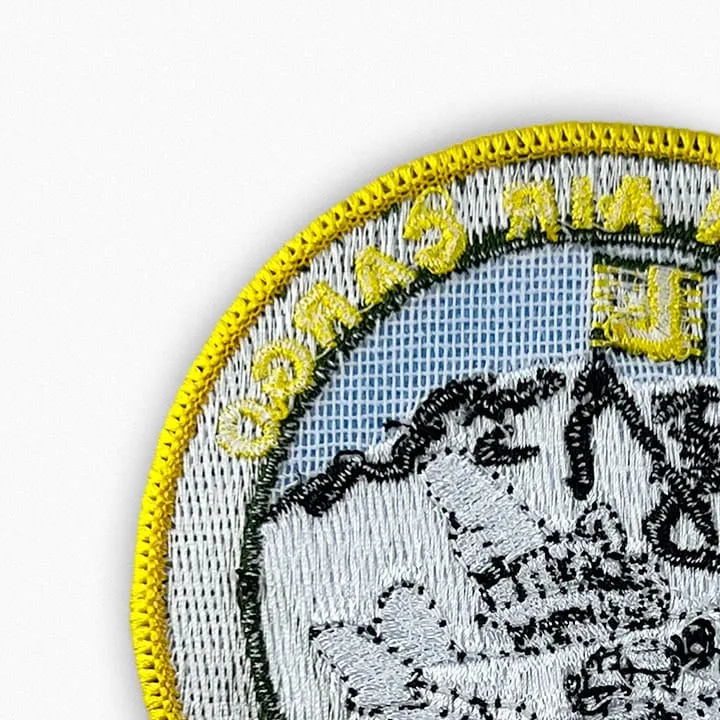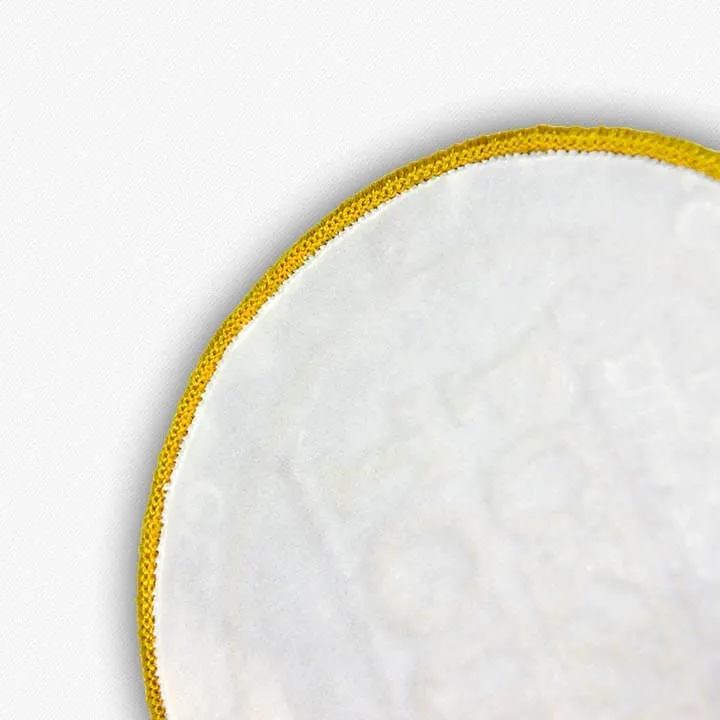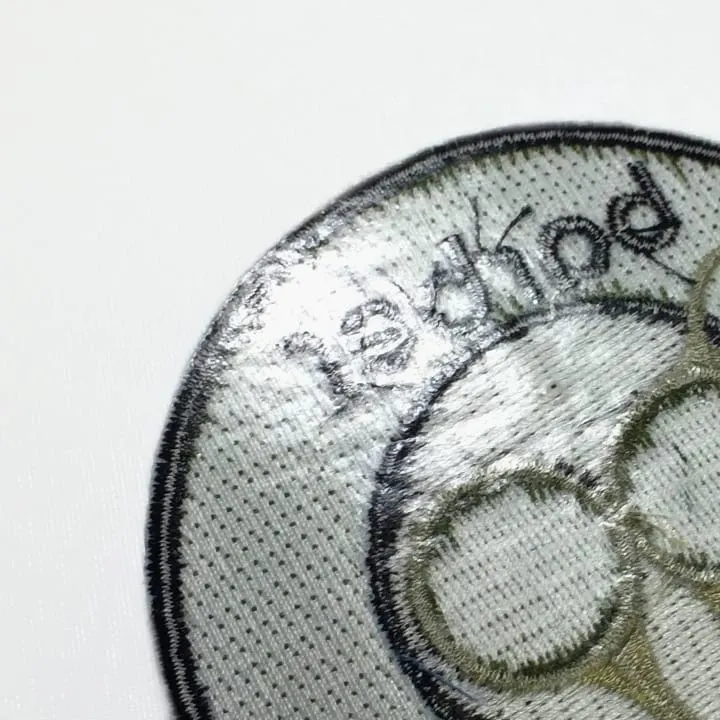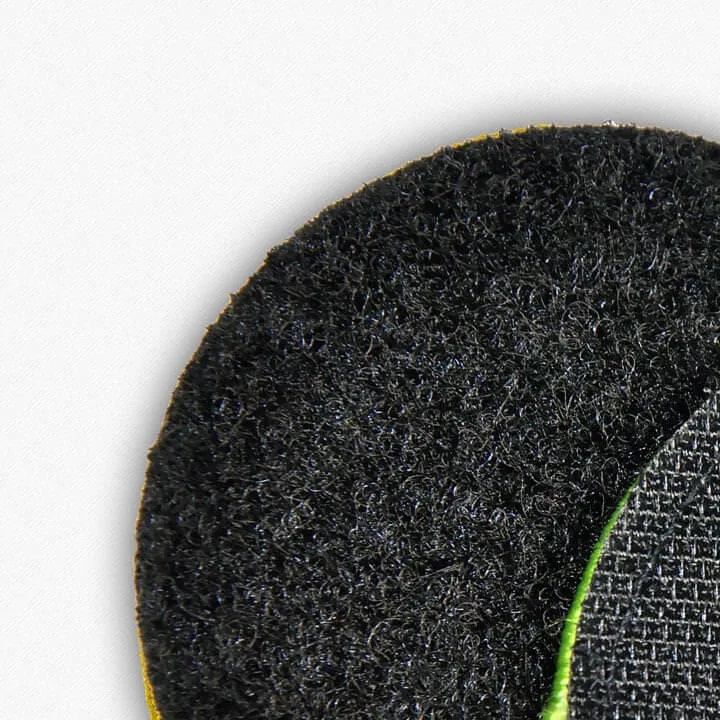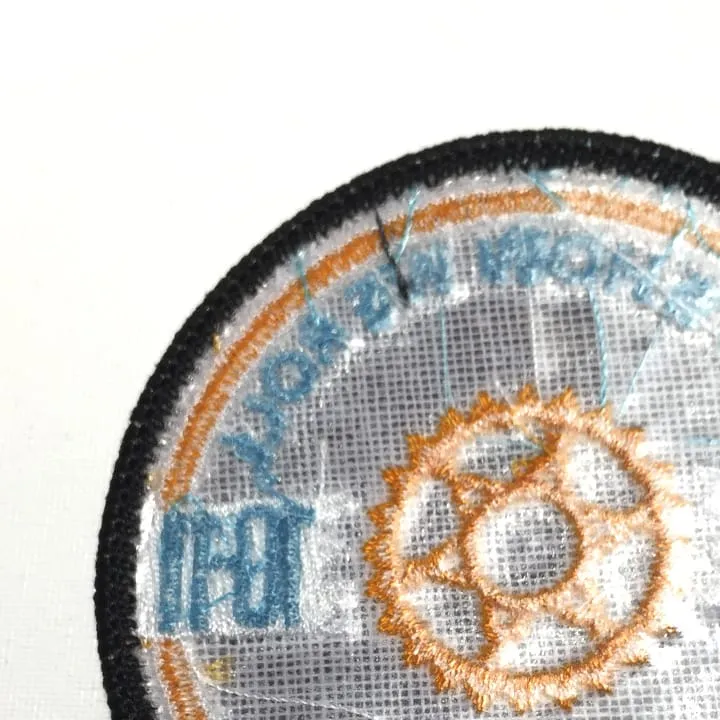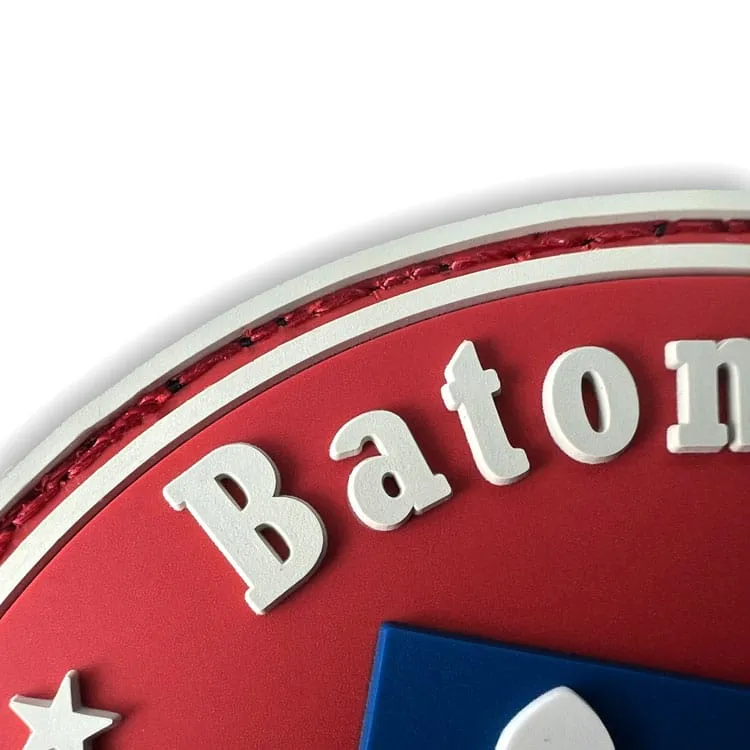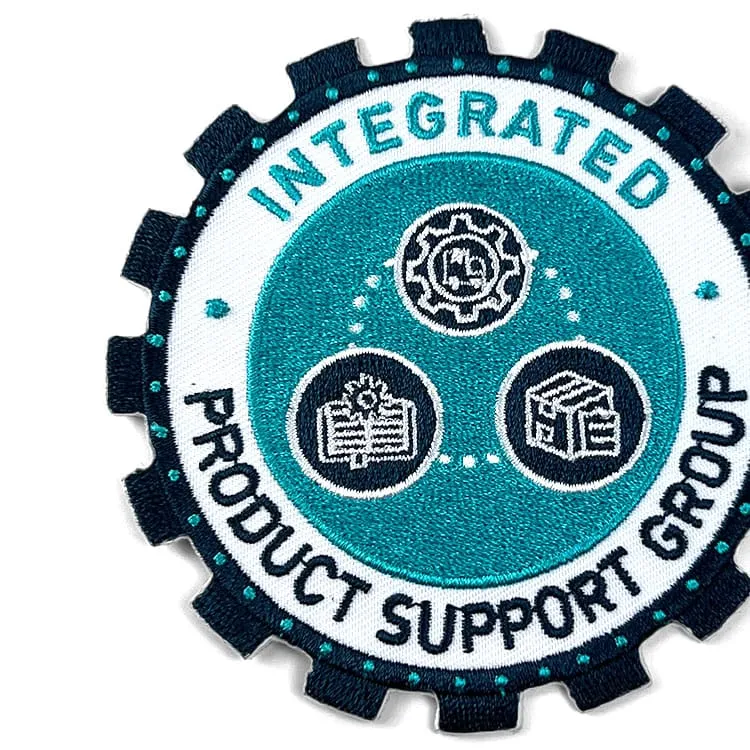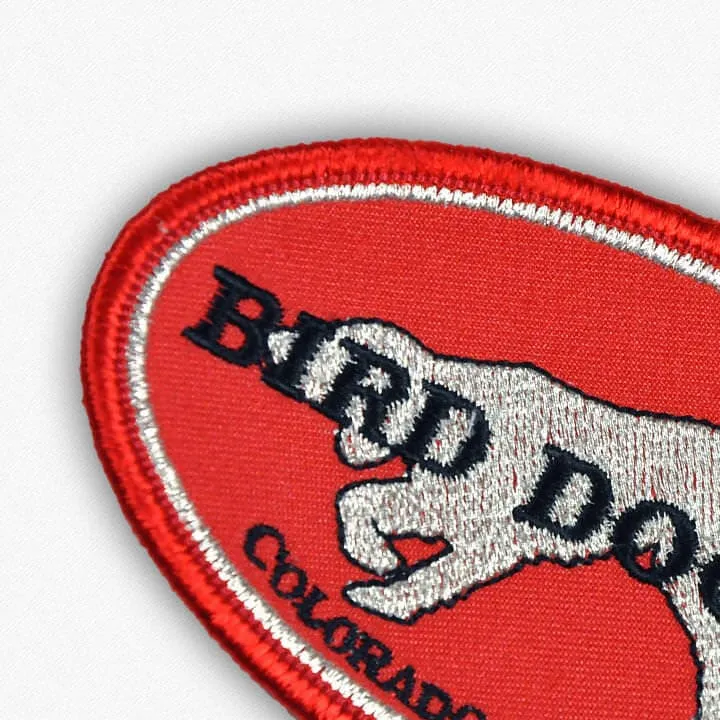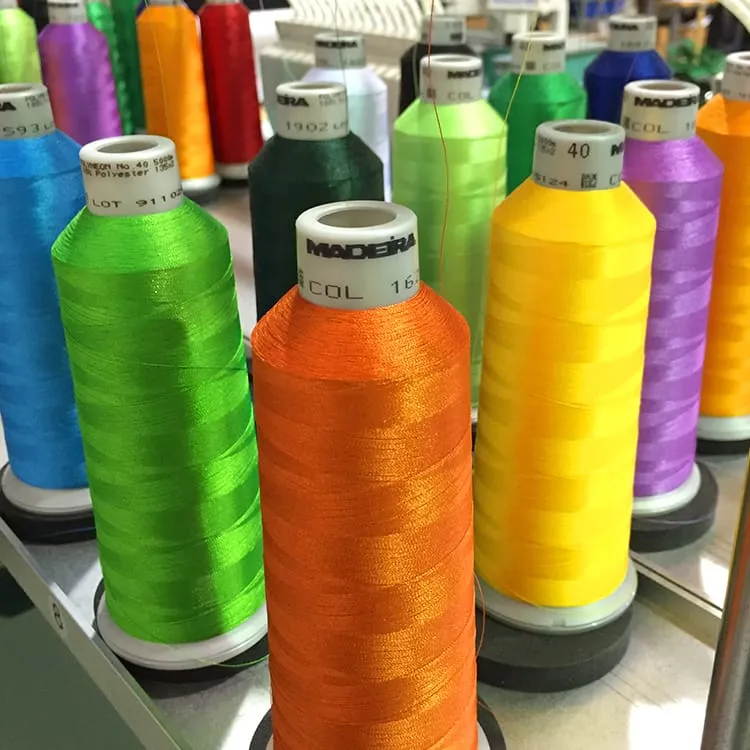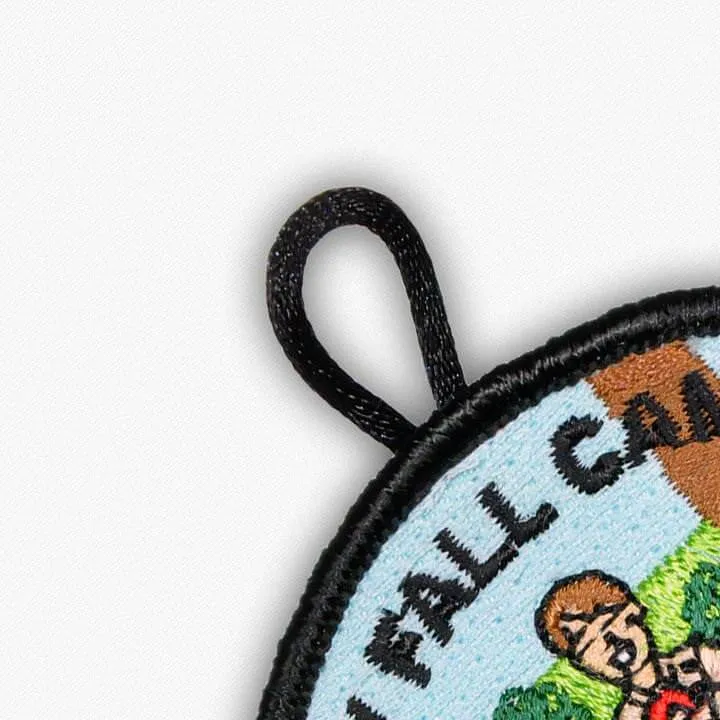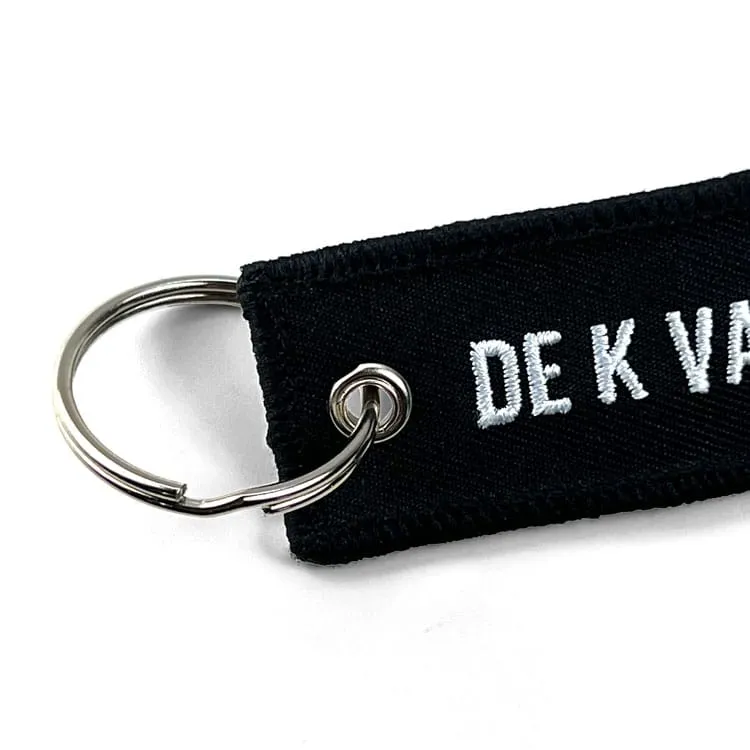Custom Patch Options
When creating custom patches, understanding the various backing and design options is essential for selecting the perfect patch for your needs. Below is a detailed overview of the available custom patch options:
Quick Reference Guide
Patch Backing Options
We offer a choice of traditional sew-on backing, iron-on, button loops or Velcro. Each backing type has its advantages for specific uses. Our experienced staff can help you decide which type is best for your particular application.
Sew-On Backing
Product information
Free
- Flexible and lightweight
- Cost-effective
- Conforms easily to fabric
Description
Sew-on backing is our traditional patch option without any stiff backing material. These flexible patches are designed to be permanently attached by sewing them onto garments or other fabrics. Unlike stiffer options, sew-on patches conform perfectly to the fabric, maintaining garment comfort and flexibility. They're ideal for all applications, especially curved surfaces and frequently worn items like uniforms, jackets, and bags.
Sticker Backing
Product information
Add 20% per patch
- Easy to apply and remove
- Ideal for temporary use
- No sewing required
Description
Sticker backing patches come with a sticky layer on the back, making them easy to attach without sewing. This option is perfect for temporary applications where you need the patch to stay in place for a short period. Ideal for quick application to outfits or costumes, it allows for easy removal, leaving no residue behind.
Iron-On Backing
Product information
Add $0.12 per patch
- Simple application with an iron
- Strong bond to fabric
- Quick and easy attachment
Description
Iron-on backing patches feature a heat-activated adhesive, allowing you to attach the patch to fabric using an iron. This method provides a strong bond, making it suitable for both temporary and semi-permanent applications.
For more information read our step-by-step guide on How to Iron On Patches. Find out how to make your patches last longer and adhere properly with our expert tips and tricks.
Velcro Backing
Product information
Add 25% per patch
- Easily removable and reattachable
- Great for uniforms and tactical gear
- Durable and secure
Description
Velcro backing patches include a hook-and-loop fastener, offering the convenience of easy removal and reattachment. This option is popular for military, tactical gear, and uniforms where patches need to be swapped out frequently.
Plastic Backing
Product information
Add $0.12 per patch
- Added durability and structure
- Maintains patch shape
- Ideal for heavy-duty use
Description
Plastic backing adds a stiff layer to the back of the patch, providing extra durability and structure. This option is excellent for patches that need to maintain their shape over time, especially in harsh conditions.
Sew-On Backing (for PVC)
Product information
Free
- Secure attachment for PVC patches
- Ideal for long-term use
- Versatile for different fabrics
Description
Sew-on backing for PVC patches is specifically designed to be sewn onto garments. PVC patches are made of flexible plastic, and the sew-on backing ensures a secure attachment by providing a channel around the outside of the patch to allow stitching.
Patch Border Options
Choose from our selection of border options to give your patches the perfect finishing touch.
Hot Cut Edge
Product information
Add $0.12 per patch
- Prevents fraying
- Clean and professional finish
- Suitable for detailed designs
Description
Hot cut edge patches are laser cut to heat seal the edges, preventing fraying and ensuring a clean finish. This method is suitable for intricate designs and shapes, offering a polished look.
Merrow® Border
Product information
Included FREE
- Classic, thick edge
- Durable and long-lasting
- Enhances patch appearance
Description
Merrow® borders are created using a special overlocking stitch, giving patches a raised, thick edge. This traditional method is popular for patches with classic and robust designs.
Additional Options
Enhance your patches with these additional customization options.
Metallic Threads (Gold and Silver only)
Product information
Add 20% per patch
- Adds sparkle and shine
- Luxurious appearance
- Ideal for special occasions
Description
Metallic threads add a shimmering effect to patches, using threads made of metallic fibers. This option is perfect for creating eye-catching and luxurious designs.
Additional Thread Colors
Product information
Add $0.12 per patch, per color
- Greater customization
- More detailed designs
- Enhanced visual appeal
Description
For more complex and colorful designs, additional thread colors can be used beyond the standard seven colors limit. This option allows for greater customization and detail in patch designs.
Neon Thread Colors
Product information
Add 20% per patch, per color
- High visibility
- Vibrant and modern look
- Ideal for standout designs
Description
Neon threads are bright, fluorescent threads that make patches stand out with vibrant colors. They are perfect for designs that need high visibility and a modern touch.
Button Loop
Product information
Add $0.12 per patch
- Easy to attach and remove
- Versatile attachment method
- Suitable for various garments
Description
Button loops are small fabric loops added to the top of the patch, allowing it to be buttoned onto a garment or accessory. This option provides a versatile and removable attachment method.
Keychain Attachment
Product information
- Functional and stylish
- Great for promotional items
- Easy to carry and display
Description
Keychain patches are designed with a loop or ring, transforming the patch into a functional and stylish keychain. This option is perfect for promotional items or personalized gifts.
Patch Options Pricing
View our comprehensive pricing guide for all patch options.
| Category | Price | |||||||||||||
|---|---|---|---|---|---|---|---|---|---|---|---|---|---|---|
| Backing |
|
|||||||||||||
| Border |
|
|||||||||||||
| Metallic Thread | +20% per patch | |||||||||||||
| Additional Thread | +$0.12 per patch | |||||||||||||
| Neon Thread | +20% per patch | |||||||||||||
| Button Loop | +$0.12 per patch | |||||||||||||
| Keychain Attachment | CALL | |||||||||||||
| 3D Puff Embroidery | +20% per patch | |||||||||||||
